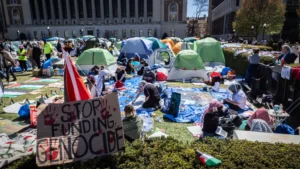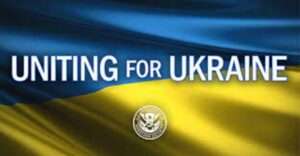
A recent viral tweet (it has 8.6 million views) inspired by controversy over anti-Israel activism on college campuses asserts that [a] good law of history is that if you ever find yourself opposing a student movement while siding with the ruling class, you are wrong. Every single time. In every era. No matter the issue." Most admirers of student political activism don't go so far as to say student movements are always in the right. Still, the belief that student activists have some special claim to moral authority is nonetheless a common one. Aren't smart, idealistic students at least likely to be right most of the time?
Sadly, the answer is "no." As Rick Hess of the American Enterprise Institute points out, there is a long history of student movements embracing awful causes and tactics:
[L]et's tally some of the "student movements" that have been a source of (mostly authoritarian) misery, mayhem, and murder over time. In every era. And no matter the issue.
There was the student movement that helped establish Fidel Castro's oppressive regime in Cuba. In 1957, the Revolutionary Directorate, an insurrectionist organization that drew heavily upon students, mounted a bloody attack on the presidential residence during which dozens were killed. Students served as a vanguard for Castro's regime as it wantonly arrested, tortured, reeducated, and murdered those deemed suspect.
There was the Marxist-shaded Iranian student movement that helped bring Ayatollah Khomeini to power, occupied and seized hostages at the US embassy in Tehran, and fueled the rise of religious fanaticism. Ironically, for the students, one of the first actions Khomeini took was to "Islamize" universities as part of a Cultural Revolution, which involved purging Marxist and secular books and professors.
There were Mao Zedong's Red Guards, the student-led paramilitary that loomed so large in China's Cultural Revolution, who helped to round up, attack, imprison, and murder millions of "counter-revolutionaries." Impassioned students helped liquidate Mao's rivals while demanding lockstep obeisance from petty officials, educators, scientists, and educated professionals—all conveniently dismissed as members of the "ruling class."
There was Daniel Cohn-Bendit ("Danny the Red") and the French student strike of May 1968, which raised justifiable concerns of civil war. This led to street battles in Paris, the retreat of French president Charles de Gaulle to West Germany, moments when it appeared Soviet sympathizers would overthrow France's democratic government, and de Gaulle's ultimate dissolution of the National Assembly.
Then, of course, there were the US student strikes of the 1960s. While the intimidation of campus leaders, building occupations, violence, and revolutionary cosplay have somehow gained a romantic edge, the institutional destruction wrought by these protestors is perhaps best captured by recalling Mark Rudd's 1968 letter to the president of Columbia: "Up against the wall mother—–, this is a stick-up."
This list can easily be extended. The Nazis were backed by a large and active student movement—the National Socialist German Student League. When it was formed in 1926, it was most certainly opposed to the German "ruling class" of the Weimar Republic.
In the 1960s, many white students at schools like the University of Alabama opposed desegregation and some mobilized to try to stop it. They saw themselves as opposing the overbearing power of the federal government, and the "ruling class" in Washington.
The student anti-war movement of the Vietnam era is often seen as obviously in the right. But US withdrawal from Indochina led to establishment of a brutal totalitarian regime in South Vietnam, and to the horrific Khmer Rouge "killing fields" in Cambodia—one of the worst mass murders in world history. Hundreds of thousands of "boat people" fled Vietnam and Cambodia after the communists triumphed, creating a massive refugee crisis. The evidence of people voting with their feet is a powerful indicator of which side in a conflict is worse. In this case, the communists were vastly more oppressive than the US-supported governments in South Vietnam and Cambodia, despite the serious flaws of the latter. Student activists who failed to see that were badly misguided.
One could still make a strong argument that the war wasn't worth it from the standpoint of America's narrow self-interest. But many student activists went far beyond that, and claimed that a communist victory would actually be a good thing. They could not have been more wrong.
Obviously, student activists aren't always in the wrong. In the 1960s, those who opposed racism and segregation were very much in the right. In more recent years, student activists were right to support same-sex marriage, and oppose racial profiling by law enforcement. And, if student activists often go wrong, the same is true of political activism by older people. The age of people supporting a cause is rarely a strong indicator of its validity.
There are, however, some systematic reasons to view student movements with a degree of skepticism. One is that younger, people, on average, have lower levels of political knowledge than older voters. In most situations, ignorance increases the chance of being wrong.
Students, on average, have higher levels of political knowledge than people who don't go to college. But they are still likely to be less knowledgeable—again, on average—than older college graduates. Recent survey data reveals widespread ignorance among students about the basic facts of the Israeli-Palestinian conflict.
Committed activists are likely to be more knowledgeable than the average student; they probably spend more time studying the issue in question. But activists with strong views are also disproportionately likely to suffer from "rational irrationality"—the tendency to be highly biased in evaluation of political information. Political activists of all ages are disproportionately likely to be highly biased "political fans" who overvalue anything that supports their preexisting views, while downplaying or ignoring contrary evidence.
None of this proves that student movements are necessarily wrong about any given issue, or even that they are generally more likely to be wrong than movements dominated by older people. The point is not that we should reflexively reject student movements' positions, but that we should not give them any special credence. That holds true for other political movements, as well.





Show Comments (4)